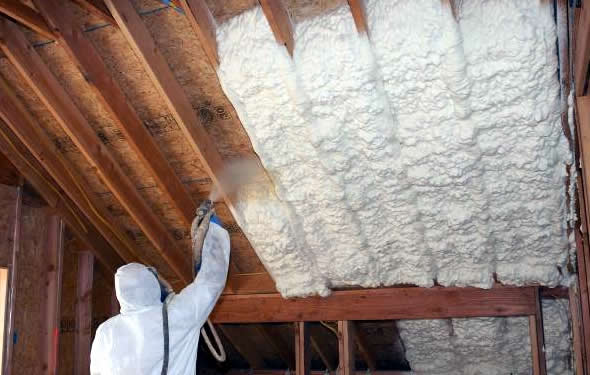
Today we will discuss several on-site safety considerations for projects that use spray foam insulation.
Based on general industry guidance, when working on projects insulated with spray foam insulation, you should understand and address 3 on-site safety considerations including your on-site personnel, exposure of other workers on-site and building occupancy.
All workers and visitors on jobsites with active spray foam insulation operations should follow appropriate PPE protocol. This includes, but is not limited to, supplied air respirators (SARs) for the applicator and other personnel within 25 feet of the application area. It is possible, when the work area is well ventilated or when personnel is not in the immediate vicinity of the application area, the worker may be able to wear full face air purifying respirators (APRs) with organic vapor/particulate cartridges instead of SARs.
Furthermore, communication with the general contractor, homeowner or jobsite foreman is critical in vacating the work area of persons other than your personnel. These actions will help minimize SPF exposure to others by removing them from potential exposure. For projects, like large commercial buildings, where vacating the premises may not be feasible, you should take steps to keep others out of the spray area, this could include the use of caution tape and signage.
Finally, typical building occupancy or re-occupancy is at least 24 hours after completion of the spray foam installation. Note, occupancy guidelines are generally most pertinent during retrofit and renovation applications; because, in new construction or commercial buildings insulation generally occurs during the overall construction process and occupancy will not occur for at least a week in most cases.
Remember, this information offers general guidance based on industry best practices and any specific recommendations from an individual SPF manufacturer supersedes these general recommendations. Additionally, professional judgment must be exercised in making these decisions, taking into account the specific circumstances of the project at hand and the best way to address these conditions.




